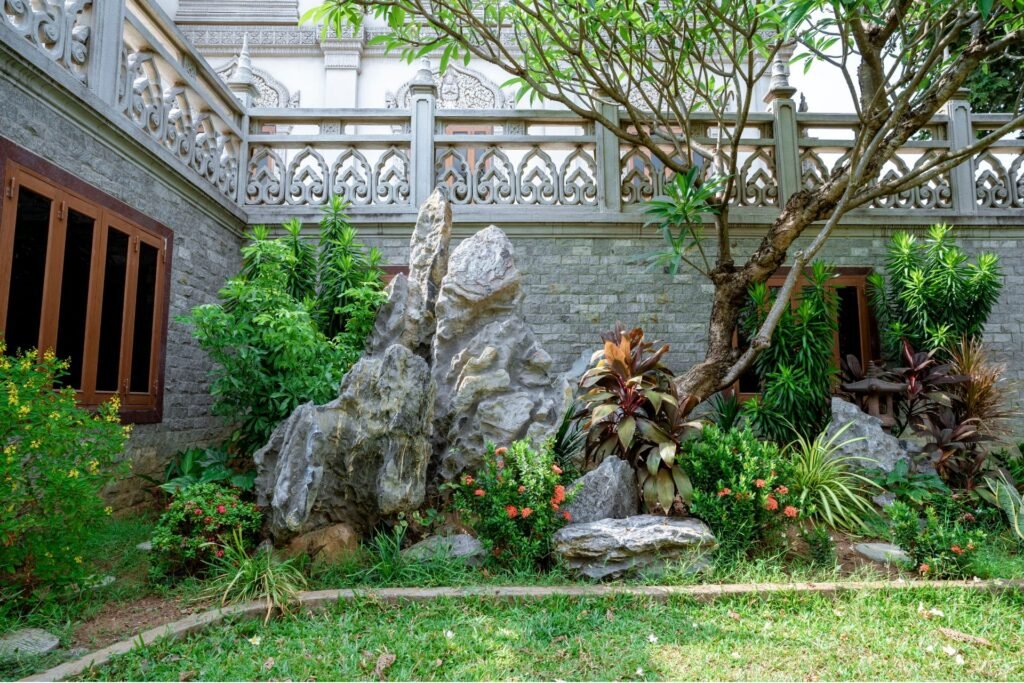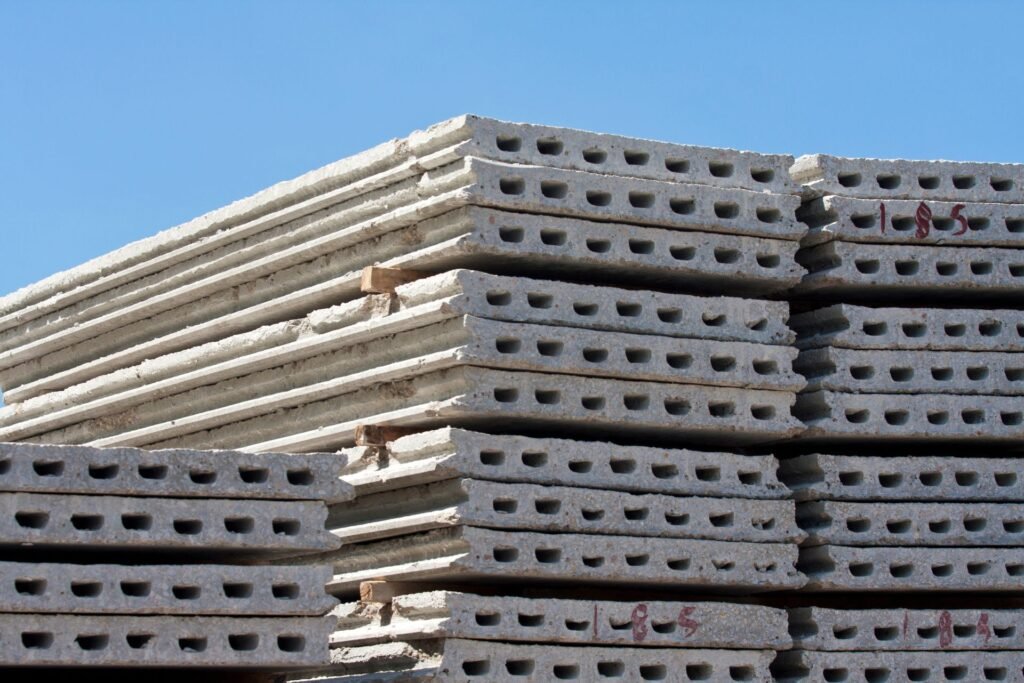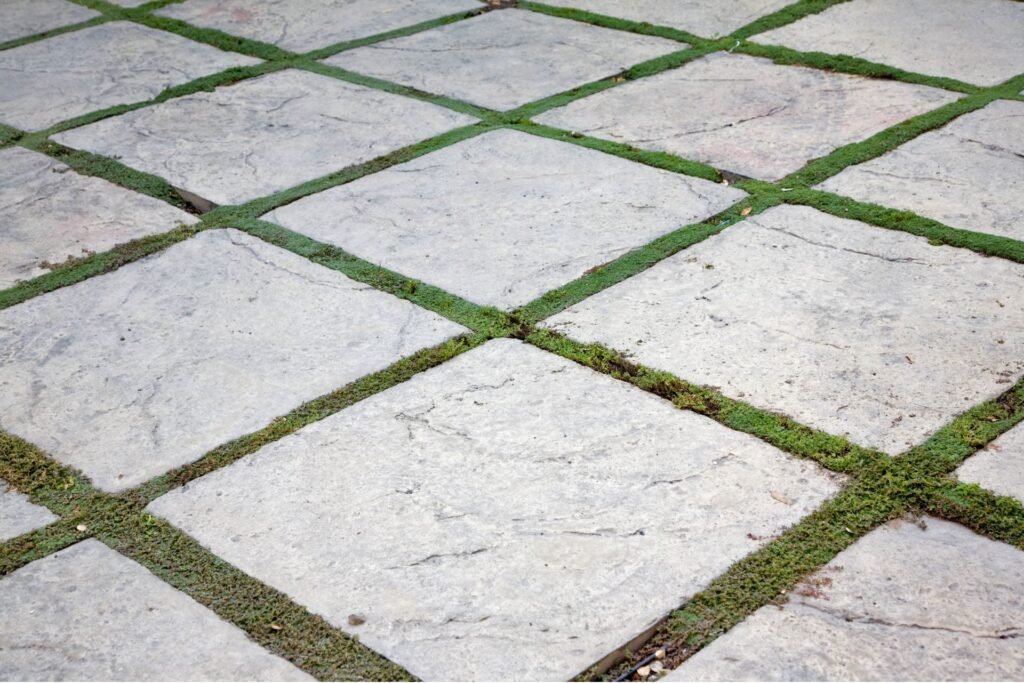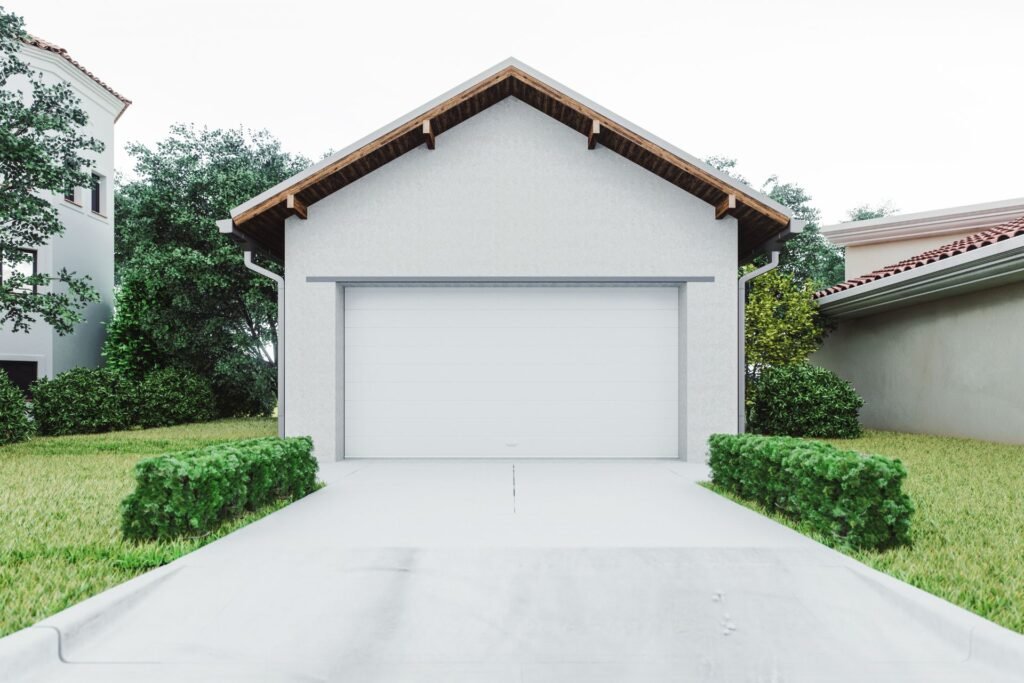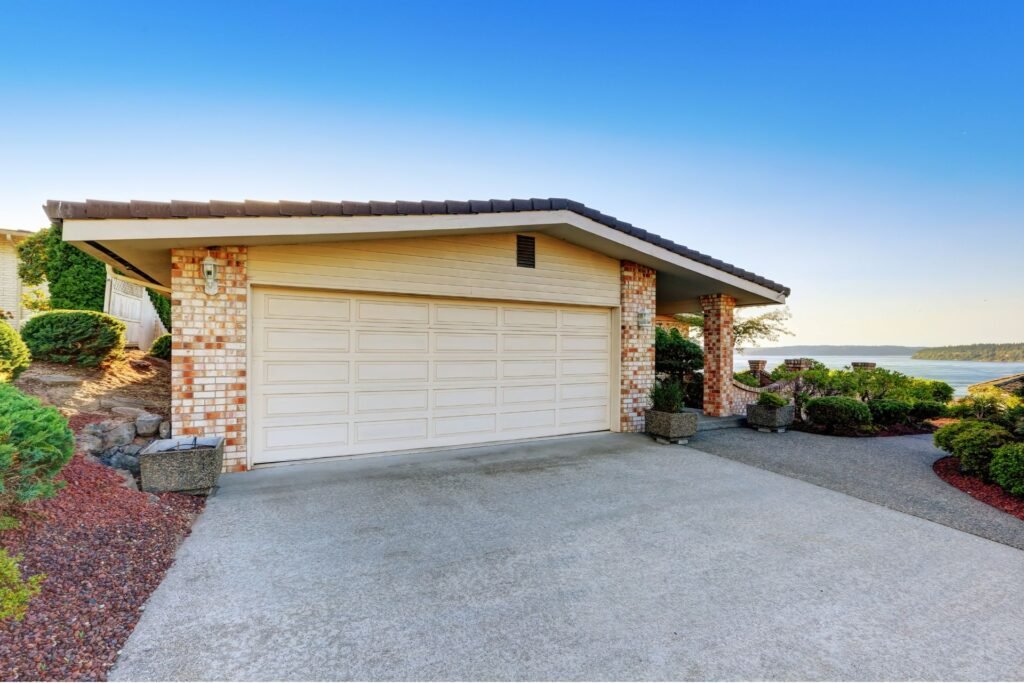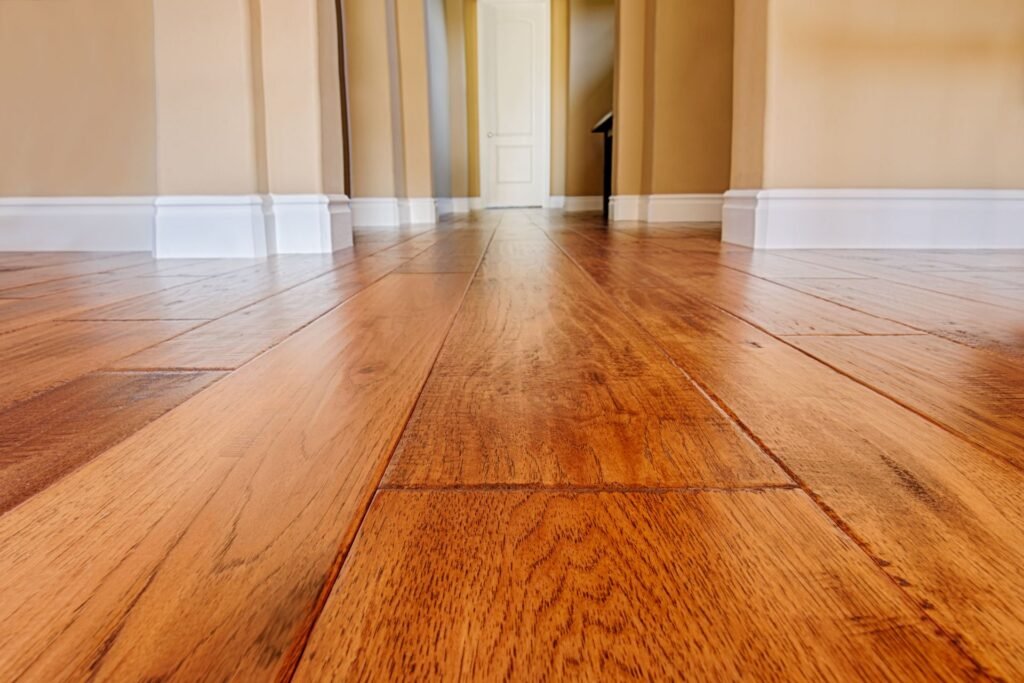Welcome to the world of garden enhancement through concrete edging, a durable and aesthetically versatile choice that can significantly improve the curb appeal and functionality of your outdoor spaces. In this guide, we’ll explore why concrete has become a preferred material for garden boundaries in New Zealand, touching on its ability to withstand varied weather conditions, complement any garden design, and require minimal upkeep. Whether you’re a seasoned gardener or just starting to cultivate your green thumb, our comprehensive overview will help you understand the advantages of concrete garden edging, from planning and installation to maintenance and beyond. Get ready to transform your garden with structured elegance and lasting beauty.
Concrete garden edging is a popular landscaping feature in New Zealand, offering a durable and visually appealing boundary for gardens and lawns. Made from robust concrete, this type of edging withstands New Zealand’s varied climate conditions, from the humid North to the frosty South. It comes in various forms, including pre-formed blocks and customizable poured concrete, allowing for flexibility in design and installation. Concrete edging not only enhances the visual appeal of outdoor spaces but also simplifies maintenance by keeping garden beds neat and preventing grass from encroaching into soil areas. Its long-lasting nature and low maintenance requirements make it an ideal choice for both residential and commercial properties looking to improve their landscape aesthetics and functionality.
Table of Contents
Understanding Concrete Garden Edging
Garden edging plays a crucial role in landscaping, serving both functional and decorative purposes. This technique involves creating a boundary around garden beds or along pathways to define distinct areas within your outdoor space. Edging can streamline garden maintenance, prevent the intrusion of grass into flower beds, and enhance the overall aesthetics of your yard.
Why Choose Concrete for Garden Edging?
Concrete is a popular choice for garden edging due to several key advantages:
Longevity and Durability: Concrete is exceptionally durable and can withstand various weather conditions without deteriorating. This makes it an ideal choice for creating long-lasting garden edges that will maintain their integrity through the seasons.
Versatility: One of the standout features of concrete is its versatility. It can be molded into a myriad of shapes, colored to suit different landscapes, and even textured for added visual appeal. This flexibility allows homeowners to customize their garden edges to complement the style and character of their outdoor spaces.
Low Maintenance: Unlike wood or metal edging materials, concrete does not require frequent upkeep. It doesn’t rust, rot, or need to be repainted, making it a low-maintenance option for busy gardeners.
Types of Concrete Edging
Concrete garden edging comes in various forms, each offering unique benefits and aesthetic appeal:
Pre-formed Blocks: These are ready-made blocks that you can buy from home improvement stores. They are quick and easy to install, making them a convenient choice for DIY enthusiasts. Pre-formed blocks are available in different sizes and styles to fit various garden layouts.
Poured Concrete: For a seamless and custom fit, poured concrete is an excellent option. This method involves pouring concrete into molds or directly along the desired edge line. Once set, it creates a continuous barrier that is both sturdy and sleek.
Customizable Shapes and Stamped Designs: For those looking to add a personal touch to their garden edges, concrete can be customized with stamped designs or unique shapes. Stamping concrete with patterns mimicking stone, brick, or even wood can elevate the visual interest of your garden edges, making them stand out.
In conclusion, concrete garden edging is a versatile, durable, and low-maintenance option that can enhance the functionality and appearance of your landscape. Whether you choose pre-formed blocks, poured options, or customizable designs, concrete can provide a reliable and attractive solution for your garden boundaries.
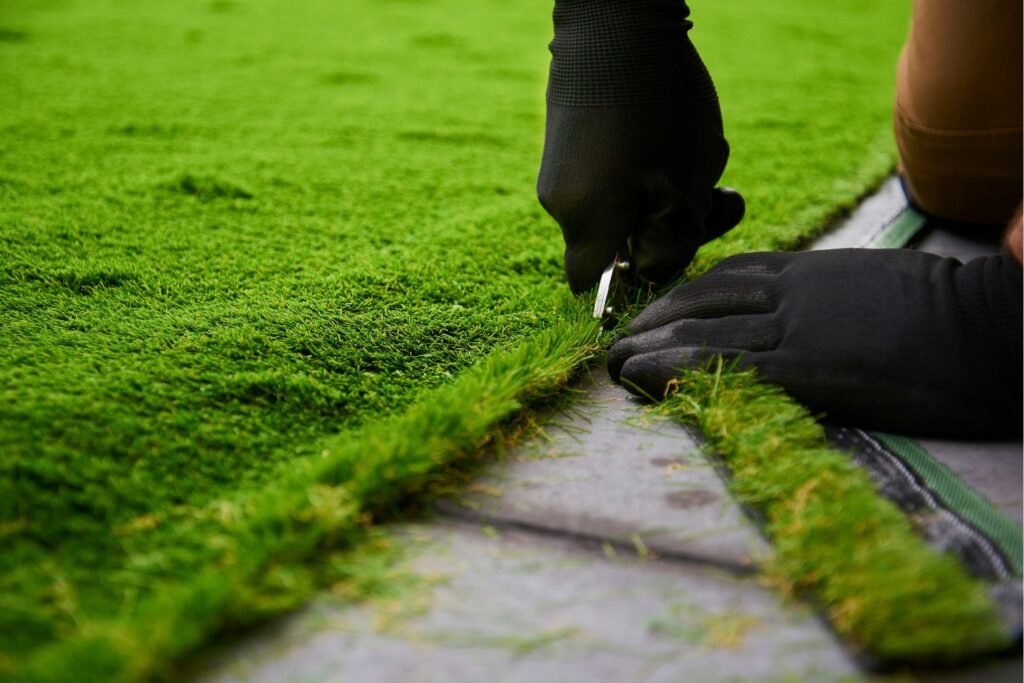
Planning Your Garden Edging Project
Garden edging is a vital aspect of landscaping that not only enhances the aesthetic appeal of your garden but also helps in maintaining clear demarcations between different sections of your outdoor space. Planning your garden edging project requires careful consideration of several factors to ensure that the outcome is both beautiful and functional. Whether you are a gardening enthusiast in the bustling city of Auckland or reside in the serene plains of Canterbury, this guide will assist you in creating perfect garden edges tailored to your local environment and personal style.
Key Factors to Consider Before Starting Your Garden Edging Project
Garden Size and Style
The size and style of your garden play a crucial role in determining the type of edging that will work best. Larger gardens may benefit from bold, prominent edging that defines vast spaces effectively, while smaller gardens might need more subtle edging to avoid overwhelming the space. Similarly, the style of your garden—be it formal, cottage, or contemporary—should influence the edging design to create a cohesive look.
Local Climate and Soil Type
New Zealand’s diverse climate zones significantly impact gardening practices. In humid regions like Auckland, garden edging materials should be able to withstand moisture without deteriorating. Concrete, known for its durability, is an excellent choice for such conditions. On the other hand, areas like Canterbury, known for their dry conditions, require garden edging that helps retain soil moisture. Understanding the local climate and soil type will help you select materials that are not only practical but also long-lasting.
Budget Considerations
Budget is another critical factor when planning your garden edging. The cost can vary widely based on the materials you choose and the complexity of the installation. It’s important to set a realistic budget early in the planning process. This helps in exploring various material options and installation techniques that do not compromise on quality while staying within your financial limits.
Design Ideas for Concrete Garden Edging
Choosing Between Straight vs. Curved Lines
The decision between straight and curved garden edges often depends on the desired style and layout of the garden. Straight lines, typically used in formal gardens, create a clean, orderly appearance. They are easier to install and can make small gardens appear larger. Curved lines, on the other hand, suit informal gardens as they add a natural and relaxed feel, flowing smoothly with the landscape contours.
Color Matching with the Garden’s Theme
When using concrete as your edging material, consider the color that best complements your garden’s theme. Concrete can be dyed in a variety of colors to match or contrast with the existing landscape elements. Selecting the right color can enhance the overall beauty of your garden, making it a visually appealing space.
Textured Versus Smooth Finishes
The texture of your garden edging can add a significant visual impact. A smooth finish gives a more modern and sleek look, which is perfect for contemporary garden styles. In contrast, a textured finish, such as stamped or exposed aggregate, can provide a rustic charm that enhances the natural feel of traditional gardens. The choice of texture should align with the garden’s aesthetic and practical needs, considering factors like ease of maintenance and visual appeal.
Planning and executing the perfect garden edging requires thoughtful consideration of various factors. By understanding the specifics of your garden’s size, style, local climate, soil type, and budget, you can choose design elements that not only elevate the beauty of your garden but also cater to its functional needs. Concrete garden edging offers versatility in design through its adaptability in shape, color, and texture, making it an excellent choice for gardeners across New Zealand. Start planning your garden edging project today and transform your outdoor space into a stunning and orderly sanctuary.

How To Install Concrete Garden Edging
Creating a beautiful, durable boundary for your garden beds or pathways is easy with concrete garden edging. This guide walks you through the process of installing concrete edging, whether you opt for the simplicity of pre-formed blocks or the custom appeal of poured concrete. Follow these steps to ensure a smooth installation and professional results.
Planning and Marking Out the Edging Layout
The first step in installing concrete garden edging is planning. Assess the area where you intend to install the edging and consider the overall design of your garden. Use a garden hose or string to mark out the path for your edging. This visual guide will help you determine the amount and shape of the edging needed. Once you’re satisfied with the layout, use spray paint or landscape marking paint to mark the ground, indicating where the edging will go.
Choosing the Right Type of Concrete Edging
There are two main types of concrete edging: pre-formed and poured. Pre-formed concrete blocks are great for straightforward, linear edges and are available in various styles and colors. Poured concrete, on the other hand, offers more flexibility for curves and custom designs but requires more preparation.
Preparing the Site
Before installing your concrete edging, prepare the site by clearing any vegetation and debris. This includes removing grass, weeds, and other plant material along the edging line. Next, level the soil to provide a stable base for the edging. For poured concrete, set up formwork to hold the concrete in place while it sets. The formwork can be made from flexible plastic or wooden boards, depending on the shape and design of your edging.
Mixing and Pouring Concrete (for Poured Edging) or Placing Pre-formed Blocks
If you choose poured concrete, mix the concrete according to the manufacturer’s instructions—typically, a mix of one part cement, two parts sand, and three parts gravel. Pour the concrete into the formwork and use a trowel to smooth it out, ensuring it is level with the ground. For pre-formed blocks, place them along the marked line, adjusting each block to ensure it is level and straight. Use a rubber mallet to gently tap the blocks into place, ensuring close contact between each block.
Finishing Touches
For poured concrete, once the concrete starts to set but is still slightly malleable, you can smooth the surface with a trowel or add decorative stamps or coloring to enhance its appearance. For both types of edging, you might consider adding decorative pebbles or plants around the new edging to integrate it seamlessly into your garden.
Safety Tips and Common Mistakes to Avoid During Installation
Safety is crucial when working with concrete. Always wear protective gear, including gloves, eyewear, and a dust mask when mixing concrete. Be mindful of lifting techniques when handling heavy materials to avoid back strain.
A common mistake to avoid is underestimating the amount of concrete needed, which can result in a patchy or incomplete project. Additionally, ensure the soil is properly compacted and leveled before installation to prevent the edging from shifting over time.
By following these detailed steps and tips, you can successfully install concrete garden edging that enhances your outdoor space and lasts for years. With proper planning and execution, this project not only boosts the curb appeal of your garden but also provides a practical solution to garden maintenance.
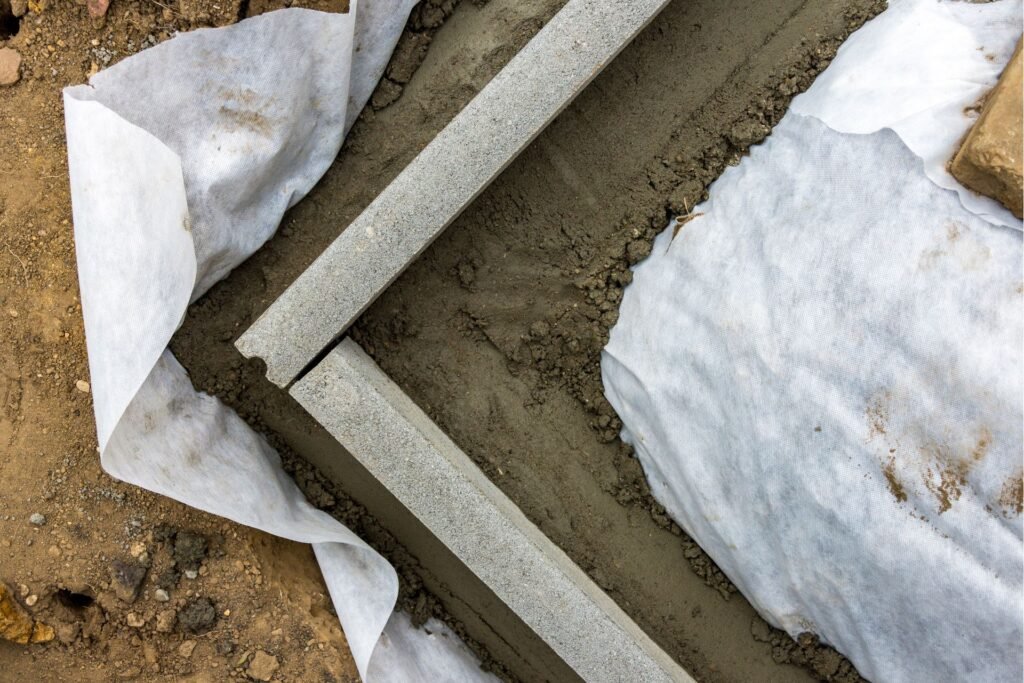
Maintaining Your Concrete Garden Edging
Proper maintenance of concrete garden edging is crucial to ensuring its longevity and visual appeal. Here, we provide comprehensive tips on cleaning and maintenance practices specifically tailored for the weather extremes common in New Zealand. These tips will help you keep your garden edges looking pristine and durable throughout the seasons.
Regular Cleaning Practices
Regular cleaning is vital to prevent the buildup of dirt, moss, and stains that can detract from the beauty of your concrete edging. Here’s how you can keep your concrete borders looking their best:
Sweeping: Regularly sweep the edging to remove loose dirt and debris. This should be done weekly or more frequently depending on the surrounding landscape and weather conditions.
Washing: Periodically, wash your concrete edging with a hose. For tougher stains, use a mild detergent mixed with water and scrub gently with a soft brush. Avoid harsh chemicals that can erode the concrete’s surface.
Stain Removal: For specific stains like oil or grease, apply a poultice of absorbent material and a solvent. Allow it to sit over the stain before washing off. This helps to lift the stain without damaging the concrete.
Repairing Minor Cracks and Chips
Concrete is durable, but it can develop minor cracks and chips over time. Here’s how to address these issues effectively:
Inspect Regularly: Check your garden edging for signs of damage regularly, especially after extreme weather conditions.
Clean the Area: Before repairing any cracks or chips, clean the area thoroughly to ensure that the repair materials adhere properly.
Fill Cracks: Use a concrete patching compound for small cracks and chips. Apply according to the manufacturer’s instructions, smooth it out, and allow it to cure completely.
Seal the Repair: Once the repair has cured, apply a concrete sealant over the area to protect it from further damage.
Applying Sealants for Weatherproofing and Enhancing Color
Sealants are not only essential for protecting your concrete garden edging from moisture and weather-related damage; they can also enhance the color and finish of the concrete. Here’s how to apply sealants effectively:
Choose the Right Sealant: Opt for a sealant that offers UV protection and enhances the concrete’s resistance to water and stains.
Clean the Edging: Ensure the surface is clean and dry before applying the sealant.
Apply Evenly: Use a sprayer or a roller to apply the sealant evenly across the concrete. Follow the manufacturer’s directions regarding drying times between coats.
Reapply Periodically: Reapply the sealant every few years or as recommended, to maintain the protective layer.
Seasonal Care Recommendations
In New Zealand, weather extremes from intense sun to freezing temperatures can pose challenges. Seasonal care for your concrete edging involves:
Winter Care: If frost is common in your area, cover your concrete edging with burlap or frost cloth to prevent cracking during freeze-thaw cycles.
Summer Protection: In intense sun, ensure your concrete is sealed to prevent UV damage. Additionally, regular cleaning helps to prevent heat-related discoloration and degradation.
By following these detailed tips for maintaining your concrete garden edging, you’ll ensure that it remains a durable and attractive feature in your garden for years to come. Regular upkeep not only enhances the look of your garden but also prevents costly repairs in the future.
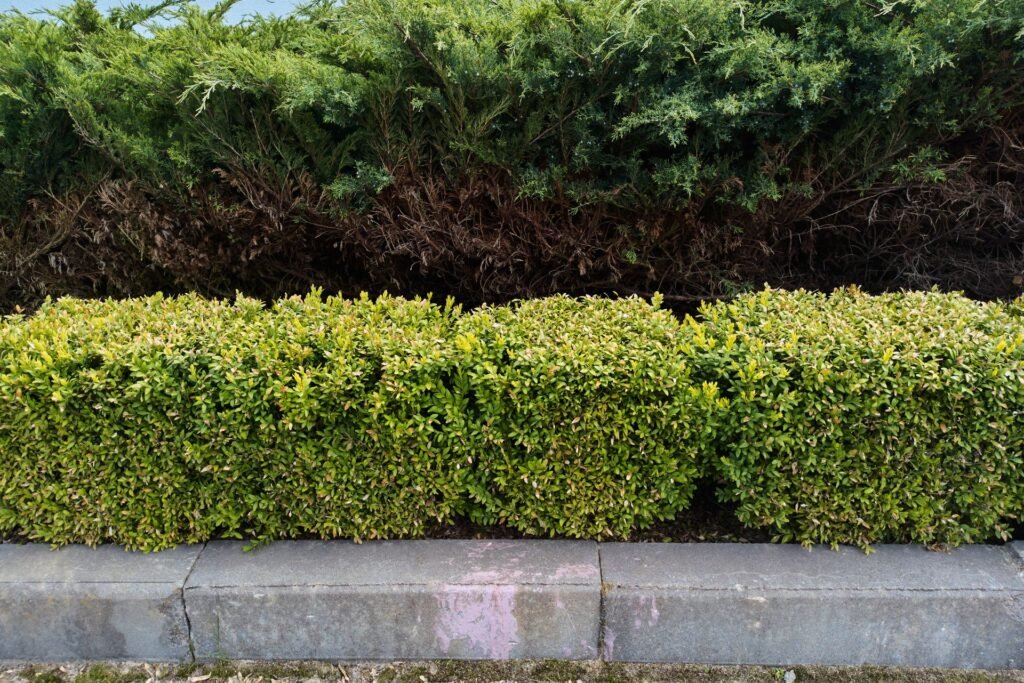
Inspirational Ideas For Concrete Garden Edging In NZ
Creating a beautiful and well-defined garden space involves more than just selecting the right plants and flowers. The edges of your garden play a pivotal role in its overall design and functionality. In New Zealand, where gardens can range from sprawling rural landscapes to compact urban plots, concrete garden edging is a popular choice due to its durability, versatility, and aesthetic appeal. In this article, we explore various concrete garden edging ideas suited to different garden styles commonly found in New Zealand homes. Plus, we’ll provide some real-life examples to inspire your next garden project!
Modern Minimalist Gardens
Modern minimalist gardens emphasize clean lines and simplicity, often reflecting the contemporary architecture of the home. Concrete edging works exceptionally well in these environments due to its sleek and unobtrusive nature. Flat, smooth concrete borders can help to define garden beds sharply and elegantly, maintaining the minimalist ethos. You can color the concrete in shades like charcoal or light grey to match or contrast the surrounding features for a more integrated or striking look.
Traditional Cottage Gardens
The charm of a traditional cottage garden, with its mix of flowers, plants, and sometimes chaotic beauty, can be enhanced with the rustic styles of concrete edging. Consider textured or stamped concrete edges that mimic natural stone to add a quaint, old-world feel. Curved concrete edging also works wonderfully in these settings, providing a soft boundary that complements the naturalistic style of cottage planting. A lightly weathered finish can blend the edging seamlessly with the lush, vibrant foliage typical of a cottage garden.
Urban and Small-Space Gardens
In urban areas where space is at a premium, maximizing every square inch is crucial. Concrete garden edging is not only functional, keeping mulch and soil tidy, but it can also be a stylish statement piece. For small gardens, using thinner, more refined concrete edging can help preserve the sense of space without compromising on style. Raised concrete borders can serve dual purposes, acting as both edging and additional seating. Integrating lighting within concrete edges can also illuminate pathways and highlight garden features at night, adding functionality and ambiance.
Real-Life Examples from New Zealand Homes
A modern home in Auckland featuring sleek, grey concrete edging that runs flush with the lawn, creating a seamless transition from grass to vibrant flower beds.
A restored heritage property in Christchurch, where stamped concrete edging in a natural stone pattern beautifully frames the lush cottage garden, enhancing its traditional aesthetics.
A compact Wellington city terrace where raised concrete edges double as seating around a small, functional herb garden, demonstrating clever use of space in urban settings.
Wrapping It Up
Concrete garden edging offers a versatile and stylish solution to defining your garden’s borders. Whether you’re in a modern city dwelling or a charming country cottage in New Zealand, there’s a concrete edging style that fits your garden’s needs and your aesthetic preferences. Use these ideas and examples as a springboard to enhance your outdoor space with both beauty and function.
Remember, a well-edged garden not only looks tidy and attractive but also makes maintenance easier, saving you time and effort in the long run. So, why not explore these concrete edging ideas and transform your garden into a stunning, well-defined masterpiece? Happy gardening!
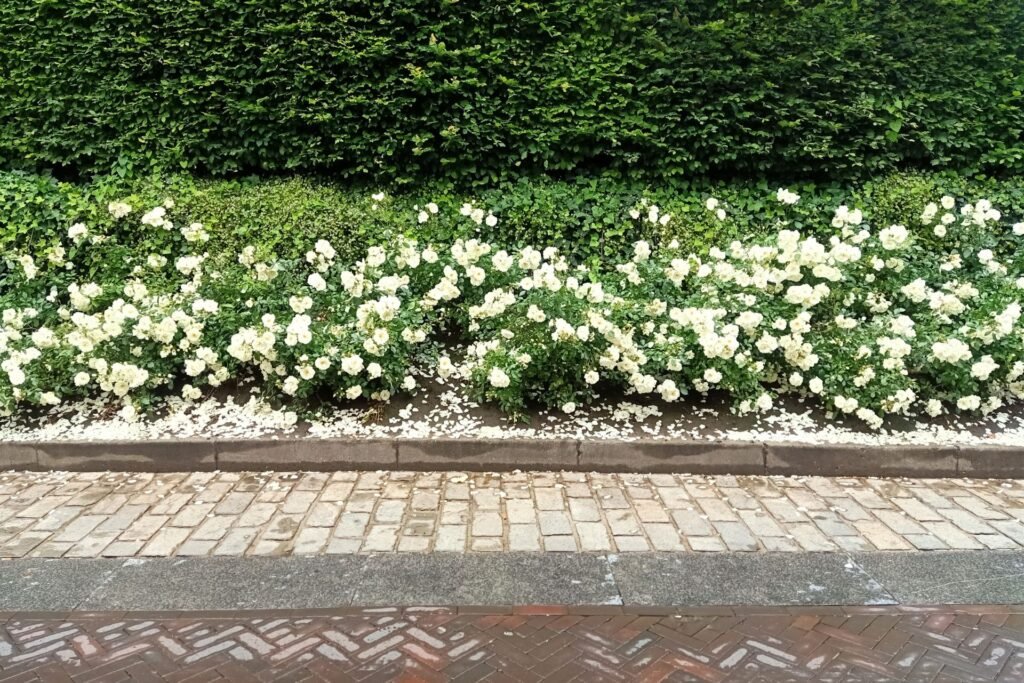
Common Challenges And Solutions
Understanding the Challenges
Environmental management and maintenance, particularly in dynamic regions like coastal areas and seismically active zones, presents a myriad of challenges. Recognizing and addressing these issues effectively is key to sustaining the environment and ensuring safety and stability. Here we delve into common problems and provide expert solutions, particularly focusing on soil erosion in coastal areas, shifting landscapes due to seismic activity, and the complexities of maintaining infrastructures in cold temperatures.
Soil Erosion in Coastal Areas
Coastal areas are particularly vulnerable to soil erosion due to their proximity to water bodies. The constant wave action, along with storm surges, can significantly wear away the coastline, leading to loss of land and potentially affecting local ecosystems and properties.
Solutions
To combat soil erosion, experts recommend several strategies:
Planting vegetation: The roots of plants help hold the soil together, making it more difficult for erosion to occur.
Building barriers: Constructing sea walls, groins, and breakwaters can help reduce the impact of waves on the shore.
Beach nourishment: Regularly adding sand or other sediments to beaches can help replace eroded materials and reinforce the coastline.
Shifting Due to Seismic Activity
Areas like Wellington, known for their seismic activity, face the challenge of landscape shifting. This can damage infrastructures, disrupt utilities, and pose risks to residents.
Solutions
Engineering solutions and monitoring are vital in these regions:
Retrofitting buildings: Strengthening structures to withstand earthquakes can minimize damage.
Using flexible materials for infrastructure: Implementing materials that can tolerate some degree of movement without breaking is crucial.
Regular monitoring and assessment: Keeping an eye on seismic activity and the health of infrastructures helps in the early detection of potential issues and timely interventions.
Overcoming Cold Temperatures in the South Island for Year-Round Maintenance
The South Island of New Zealand is known for its colder climate, which can pose significant challenges for year-round environmental maintenance. Cold temperatures can lead to frozen machinery, slower chemical reactions in treatment processes, and increased energy costs for heating.
Solutions
Effective strategies to address these challenges include:
Winterizing equipment: Ensuring that all machinery is suitable for cold weather operations and well-maintained can prevent breakdowns.
Using cold-tolerant materials: Select materials for infrastructure that perform well in lower temperatures.
Adjusting schedules: Modify maintenance schedules to maximize work during warmer periods of the day or year.
Expert Tips for Troubleshooting Common Issues
Experts emphasize the importance of a proactive approach to environmental maintenance. Regular inspections, prompt responses to the first signs of trouble, and continuous learning from past incidents are crucial. Staying updated with the latest research and technological advances can also provide new tools and techniques for tackling these common issues more effectively.
Addressing environmental challenges requires a thoughtful blend of traditional practices and innovative solutions tailored to specific regional needs. By understanding the nature of these problems and applying expert-recommended strategies, effective maintenance, and sustainability can be achieved. This proactive approach not only preserves the environment but also enhances the quality of life for all residents in the affected areas.
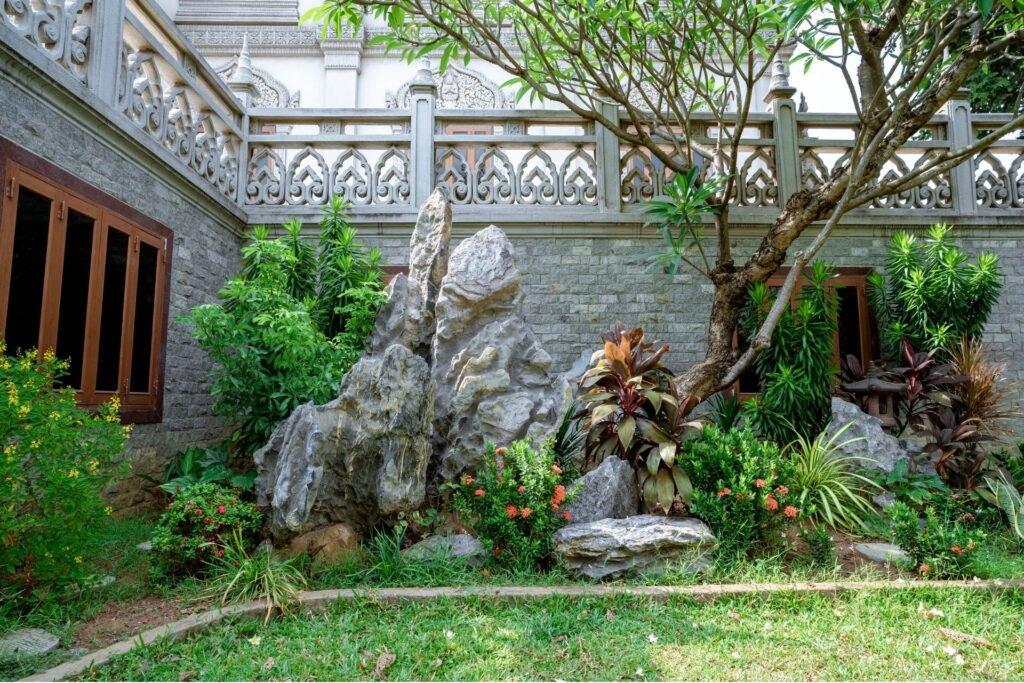
FAQs: About Concrete Garden Edging NZ
What is concrete garden edging?
Concrete garden edging involves using concrete to create borders in gardens and landscaped areas. It helps define garden spaces, keeps soil and mulch in place, and prevents grass from spreading into garden beds.
Why should I choose concrete for garden edging in New Zealand?
Concrete is highly durable and weather-resistant, making it ideal for New Zealand’s diverse climates. It also offers versatility in design and can be customized to fit various garden styles.
What are the different types of concrete garden edging available?
There are primarily two types: pre-formed concrete blocks, which are ready to install, and poured concrete, which can be shaped and customized on-site.
How do I install concrete garden edging?
Installation involves planning the layout, preparing the site by clearing vegetation and leveling the ground, setting up formwork if using poured concrete, placing the concrete, and then finishing by curing and sealing.
Can I install concrete garden edging myself?
Yes, DIY installation is possible, especially with pre-formed blocks. Poured concrete might require some technical skills and equipment for mixing and pouring.
What maintenance does concrete garden edging require?
Maintenance is relatively low but includes cleaning the edging regularly, checking for cracks or chips, and applying sealant periodically to maintain its appearance and durability.
How long does concrete garden edging last?
With proper installation and maintenance, concrete edging can last for many years, often outlasting other edging materials due to its robust nature.
Is concrete garden edging expensive?
The cost can vary based on the type of concrete edging and the complexity of the installation. Pre-formed blocks are generally less expensive than custom poured concrete designs.
How does concrete edging impact the environment?
Concrete is a durable material that does not need frequent replacement, minimizing waste. However, it is energy-intensive to produce. Choosing locally sourced concrete can help reduce environmental impact.
Where can I buy concrete garden edging in New Zealand?
Concrete garden edging can be purchased from home improvement stores, landscape supply companies, and directly from manufacturers that specialize in pre-formed or custom concrete products.
Conclusion
In conclusion, using concrete for garden edging offers numerous benefits, from durability to versatility. It’s a superb choice for those looking to add a clean, organized look to their garden while ensuring longevity and ease of maintenance. I encourage garden enthusiasts to personalize and experiment with concrete edging, as it can significantly enhance both the aesthetics and functionality of your outdoor spaces. Whether you decide to embark on this creative journey alone or with professional guidance, starting your concrete edging project can transform your garden into a more beautiful and practical space. For those in New Zealand, consulting with local landscaping experts can provide additional insights and assistance to bring your garden vision to life.

